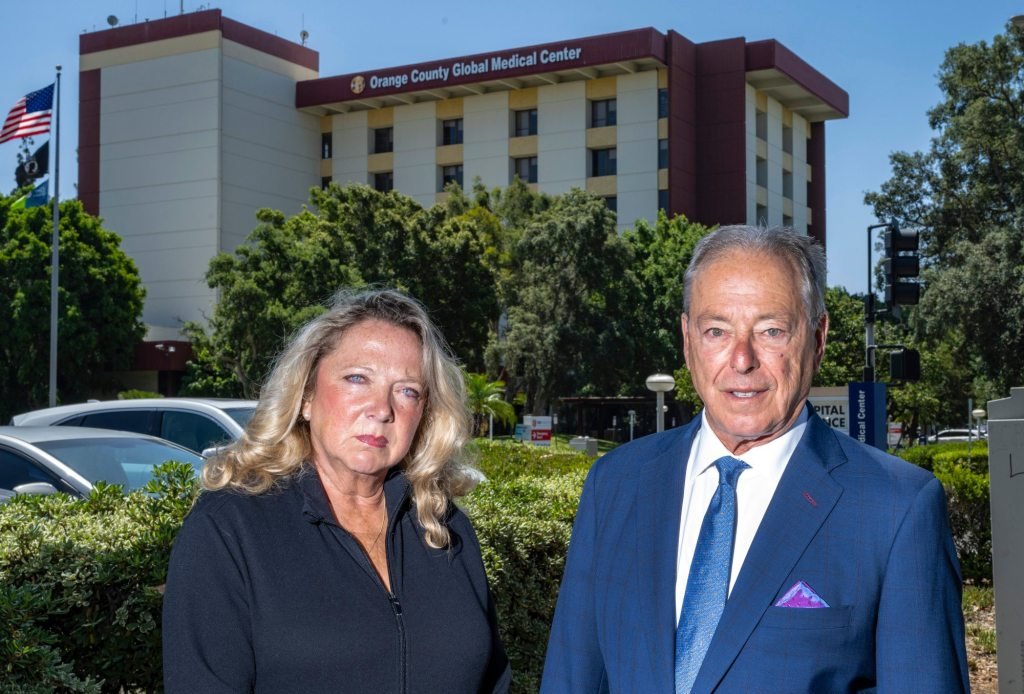Orange County Global Medical Center: A Critical Examination of Patient Safety and Operational Challenges
Orange County Global Medical Center (OCGMC), a vital trauma center in a region of 3.2 million people, recently came under fire for its substandard care that has led to severe patient risks, including at least one death. A thorough investigation by the California Department of Public Health (CDPH) revealed multiple significant deficiencies, compelling OCGMC to address these issues or face potential severe repercussions.
Investigation Findings and Immediate Concerns
The February audit produced a shocking 177-page report detailing concerning occurrences within OCGMC from late last year into early this year. The facility, which serves as a primary treatment hub for stroke patients and others in critical conditions, was found to have multiple systemic failures. Among the most alarming issues was the hospital’s inability to pay contractors on time, leading to situations where essential medical supplies and services were withheld. For instance, a delay in processing lab tests due to an unpaid bill for over two weeks posed a life-threatening risk to many patients, including vital tests for conditions like tuberculosis and HIV.
Moreover, instances of negligence included life-or-death situations where hospital staff dislodged a patient’s tracheostomy tube, resulting in the patient’s death. Such incidents demonstrate a lack of adherence to basic patient safety protocols. Julie Siemers, a noted patient safety consultant, remarked that these failures indicate a regulatory and operational crisis, presenting unacceptable risks to patient welfare.
Systemic Financial Pressures
Peter Baronoff, managing director of hospital owner KPC Health, attributed the operational failures to broader financial pressures affecting safety-net hospitals. With diminishing Medicaid reimbursements and rising operational costs, OCGMC’s struggles are reflective of a larger industry trend where many hospitals face serious financial challenges. Baronoff outlined how these pressures force healthcare facilities to make difficult decisions that ultimately impact their ability to deliver critical care to vulnerable populations.
Despite achieving compliance designations from state regulators following a corrective plan, the underlying issues have raised significant worries about the quality of care provided to current and future patients. Patient safety experts, including Siemers, caution that the visible failures may represent just the “tip of the iceberg” concerning deeper operational deficiencies.
Laboratory Shortcomings and Patient Delays
The investigation also revealed critical lab deficiencies, where up to 446 specimens remained unprocessed for over two weeks due to non-payment issues. Samples included urgent tests for serious diseases and other significant medical conditions that demanded swift action. The lack of a contingency plan and failure to communicate these delays heightened the risk for patients, exacerbating already precarious situations.
In one notable instance, a patient in need of a lithotripsy machine was forced to seek treatment elsewhere because the hospital had not fulfilled its financial obligations to vendors. Such financial mismanagement creates a ripple effect that compromises patient care and safety.
Legal Action and Patient Experiences
In addition to scrutiny from health regulators, OCGMC faces numerous patient lawsuits stemming from alleged substandard care. Claims include lengthy delays in critical treatment and inadequate physician availability. Stories of patients subjected to preventable neurological damage due to hospital delays further signify systemic issues regarding operational protocols and staffing.
One patient, Khusro Jhumra, alleged that delays in necessary procedures owing to the hospital’s vendor issues led to significant brain damage. Likewise, Sarah Martin’s experience with misdiagnosis and treatment delays illustrates the severe repercussions of systemic oversights within the hospital. Attorneys have raised alarms about these incidents, advocating for a reevaluation of the hospital’s operational status as a certified stroke center.
Patient Fatalities and Facility Conditions
Tragic outcomes, such as the death of a patient due to a dislodged tracheostomy tube—an event investigated extensively by regulatory bodies—underscore the grave consequences of OCGMC’s failure to adhere to safety protocols. Compounding this tragedy was a malfunctioning defibrillator during a critical moment, illustrating equipment-related liabilities that can arise from inadequate maintenance and operational oversight.
Operational deficiencies also extended to environmental controls within the facility, where a broken heating system exacerbated patient discomfort during the winter months and created conditions conducive to infections.
Regulatory and Financial Accountability Concerns
The myriad challenges faced by OCGMC echo the institution’s broader corporate struggles under the KPC Health banner. The hospital has received consistently low ratings for patient care and operational performance from various oversight bodies, including the Medicare website. Such low rankings not only reflect patient dissatisfaction but also highlight fundamental discrepancies in care quality.
With KPC Health at the helm of several healthcare facilities across different states, the systemic issues seen at OCGMC raise important questions regarding overall accountability and governance in healthcare delivery. As stakeholders, patients, and advocacy groups continue to scrutinize these developments, the healthcare community must recognize the urgent need for reform and oversight to ensure the safety and well-being of patients across all facilities.
In summary, OCGMC’s operational and ethical missteps are significant warning signs that call for immediate attention from health regulators and the community. The stories of affected patients and the larger systemic failures illustrate the risk of ignoring underlying issues in healthcare infrastructure and management. If the healthcare community is to move forward positively, a commitment to transparency and quality care must be at the forefront of discussions.









